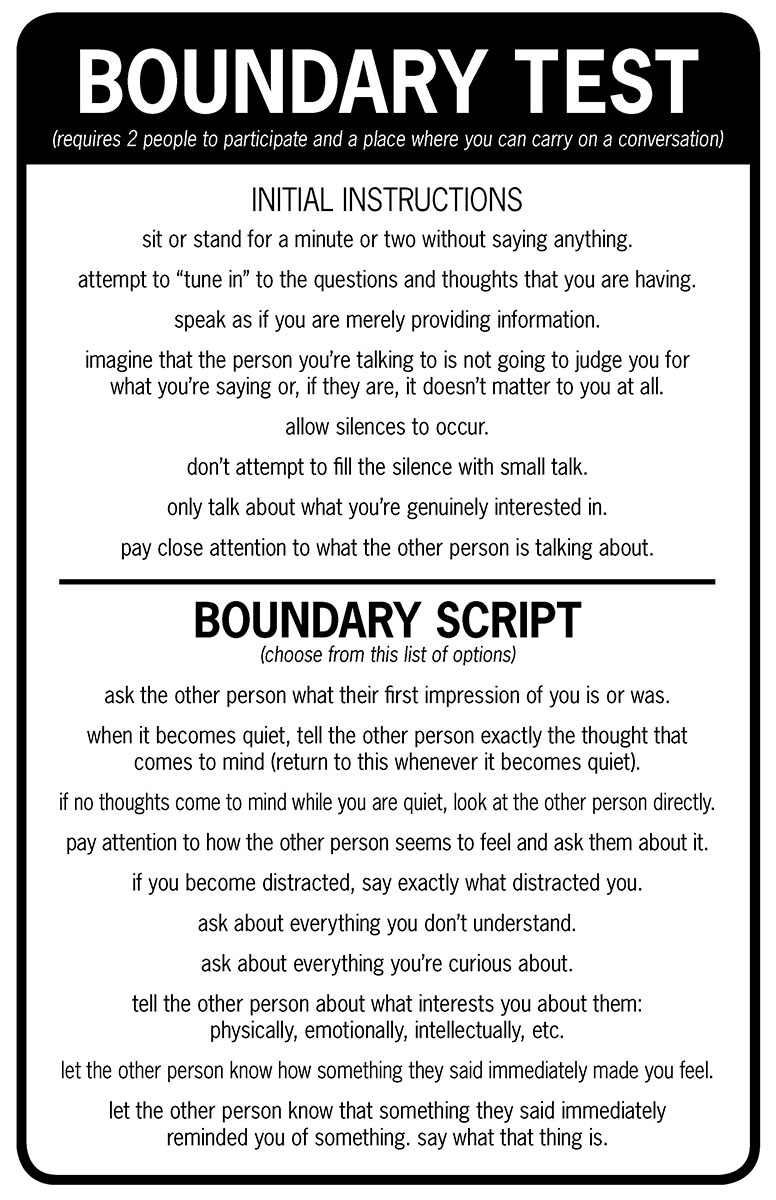Boundary Test
2012
11″x17″ weatherproof digitally printed sign on gatorboard
These signs were attached to existing prohibitive signs (such as: “No Trespassing”) to encourage participants to alter their own social boundaries
Text included:
Boundary Test
(requires 2 people to participate and a place to carry on a conversation)
initial instructions
Sit for a minute or two and try to not think about being clever or witty.
Imagine yourself in a very clinical environment where the questions you ask and the answers you give must be as close to what you’re really thinking without editing for social acceptability. Speak as if you are merely providing information.
Imagine that the person you’re talking to is not going to judge you for what you’re saying or, if they are, it doesn’t matter to you at all.
Allow silences to occur.
Don’t fill the silence with small talk or talk about anything that you’re not genuinely interested in.
Attempt to “tune in” to the questions and thoughts that you are having.
Pay close attention to what the other person is talking about.
boundary script (choose from this list of options)
Ask the other person what their first impression of you is or was.
When it becomes quiet, tell the other person exactly the thought that comes to mind (return to this whenever it becomes quiet).
If no thoughts come to mind while you are quiet, look at the other person directly.
Pay attention to how the other person seems to feel and ask them about it.
If you become distracted, say exactly what distracted you.
When the other begins to talk about something you’re interested in, ask questions about every part you don’t understand.
When the other begins to talk about something you’re interested in, ask questions about every part you’re curious about.
Ask the other person something that interests you about them, physically, emotionally, intellectually, etc.
Let the other person know how something they said immediately made you feel.
Let the other person know if something they said immediately reminded you of something. say what that thing is.
